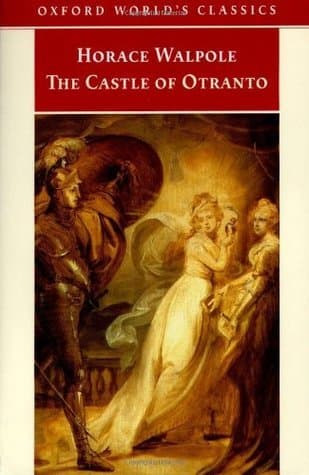
Book Review Summary: The Castle of Otranto
Introduction
"The Castle of Otranto" is a groundbreaking novel that has stood the test of time. Written by Horace Walpole in 1764, it is considered the first Gothic novel in English. With its blend of ancient and modern romance, the novel captivated readers with its inventive storytelling, entertainment, terror, and pathos. Despite its flaws, Walpole's style is crisp and economical, making the book a quick and enjoyable read. The novel's influence on the genre of Gothic fiction is undeniable, and it remains a classic work that continues to captivate readers today.
About Horace Walpole
Horace Walpole, the author of "The Castle of Otranto," was an English art historian, man of letters, antiquarian, and Whig politician. He is best known for his Gothic novel, which established the genre and set the standard for future works. Walpole was also a prolific letter writer, and his correspondence provides valuable insights into his personal life and literary career. His contributions to literature extend beyond "The Castle of Otranto," as he was a significant figure in the development of the Gothic genre.
Analysis of Views
-
Influence on Gothic Fiction: Readers praise "The Castle of Otranto" for its groundbreaking role in the Gothic genre. It introduced many elements that would become staples of Gothic fiction, such as supernatural occurrences, eerie castles, and mysterious occurrences. The novel's influence can be seen in subsequent works by authors like Mary Shelley, who drew inspiration from Walpole's style.
-
Blending Romance Genres: Walpole's ability to blend the ancient and modern romance genres is widely appreciated. He successfully merged the traditional elements of romance with the newfound Gothic elements, creating a unique and captivating narrative. Readers find this blending of genres refreshing and enjoyable.
-
Terror and Pathos: The novel's ability to evoke terror and pathos is a significant aspect that readers admire. Walpole skillfully weaves elements of both into the story, creating a sense of suspense and emotional depth. Readers appreciate the balance between terror and pathos, which adds depth to the narrative and keeps them engaged throughout the book.
-
Crisp Writing Style: Walpole's writing style is commended for being crisp and economical. Despite its length, the novel is a quick read that keeps readers engaged. Walpole's concise writing style contributes to the book's accessibility and makes it an enjoyable read for many.
-
Eerie Atmosphere: The eerie atmosphere that permeates "The Castle of Otranto" is a key factor in its appeal. Readers find the supernatural elements, such as ghostly appearances and mysterious events, to be intriguing and chilling. The atmosphere creates a sense of suspense that keeps readers on edge throughout the book.
Reasons for Recommendation
-
Groundbreaking Contribution: "The Castle of Otranto" is highly recommended for its groundbreaking contribution to the Gothic genre. It paved the way for subsequent works and established the Gothic novel as a popular form of literature. Readers appreciate its influence on the genre and consider it essential reading for anyone interested in Gothic fiction.
-
Blending Genres: The blending of romance genres in "The Castle of Otranto" is another reason for its recommendation. Walpole's ability to merge ancient and modern romance elements creates a unique reading experience that appeals to a wide audience. Readers enjoy the fusion of genres and find it refreshing in comparison to other works from the time period.
-
Terror and Pathos: The novel's ability to balance terror and pathos is also a reason for its recommendation. Walpole's skillful incorporation of both elements adds depth to the narrative, making it more engaging for readers. The combination of terror and pathos creates a sense of suspense that keeps readers invested in the story.
Reasons for Not Recommendation
-
Melodramatic Trash: Some readers criticize "The Castle of Otranto" as melodramatic trash, finding it overly dramatic and lacking substance. They feel that the story relies too heavily on cliches and lacks depth in character development. These readers prefer more substantial works that offer deeper insights into human nature and emotions.
-
Oddity: A few readers find "The Castle of Otranto" odd or strange due to its unconventional storytelling style or plot twists. They may find it challenging to follow or connect with the characters, which can make the reading experience less enjoyable for them. However, these readers acknowledge that the oddity adds to the novel's unique charm and sets it apart from other works within the genre.
Conclusion
"The Castle of Otranto" by Horace Walpole remains a classic work that has stood the test of time. Its groundbreaking role in establishing the Gothic genre, blending romance genres, evoking terror and pathos, and its crisp writing style make it a highly recommended read for fans of Gothic fiction. While some readers may find it melodramatic or odd, others appreciate its unique charm and consider it essential reading for anyone interested in exploring the Gothic genre. With its enduring appeal and timeless storytelling, "The Castle of Otranto" continues to captivate readers and inspire future generations of writers.